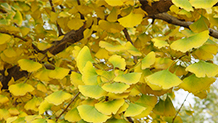| 作 者:Chang JT, Zhang Y, Andronova E, Averyanov LV, Filippov EG,Kawahara T, Sheferson R, Kim JH, Hsu RCC, Cho YH, Luo MX, Liao PC, Lee YI |
| 影响因子:3.124 |
| 刊物名称:Botanical Journal of the Linnean Society |
| 出版年份:2024 |
| 卷:205 期:2 页码:150-160 |
论文摘要:
The Pleistocene was characterized by climate fluctuations with rapid transitions between glacialinterglacial periods. East Asia’s land bridge dynamicsmonsoon system during the Middle Pleistocene transition (MPT) further constrained species distributionsdispersals, which promoted local adaptationspecies diversification, making East Asia an excellent location to study species biogeography. Cypripedium macranthos Sw., a terrestrial orchid, diverged in the Pleistocenebecame widespread in Russia, China, Korea,Japan. Many populations are now at risk due to illegal harvestinghabitat loss. With comprehensive sampling including 171 individuals among 22 populations across the entire distribution range, together with plastid DNA sequencing, we have explored the originimpact of palaeoclimate on its spatial genetic structurehistorical biogeography. Regression-based analyses commonly used in landscape genetics were also applied to investigate the effects of precipitation, temperature,wind on gene flow. The results revealed northeastern China as the probable cradle of C. macranthos, with northeastward divergencerange expansion during the MPT, aided by monsoon shiftswind-driven seed dispersal. Isolation by environment was detected with winter temperature as a driver for north–south divergence controlling for an effect of isolation by distance, revealing cold adaptation of the northern populationstemperature-driven genetic differentiation. We also emphasize the founder speciation of an unique variety on Rebun Island of Japan. The widespread but geneticallyecologically divergent C. macranthos populations highlight the need for more conservation attention on northern populations under global warming.
DOI:10.1093/botlinnean/boae003










